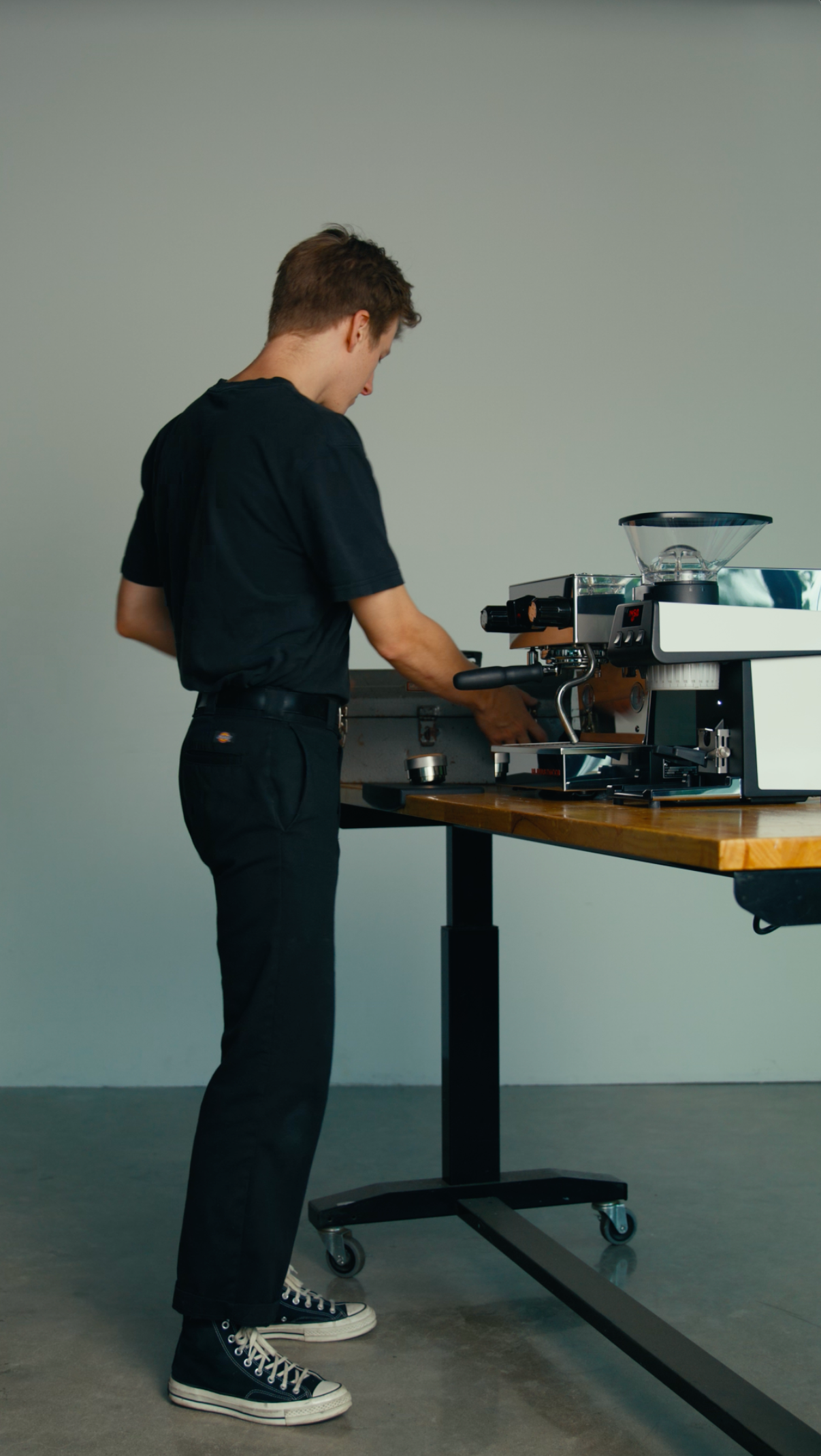What are we calibrating exactly?
Welcome back to the Technician’s Dispatch. In this edition, we’ll walk through the adjustment ring on the Pico and talk about the The Details of Calibration, like how to calibrate or reset its “zero” point. Typically, the zero point only needs to be reset if the burrs and adjustment ring have been removed from the grinder. Otherwise, the Pico will be set up correctly by La Marzocco before it arrives.
What is the “Zero Point”
The “zero point” marks the position where the grinder’s burrs are the closest together without touching—finding the zero point and setting it correctly allows you to fine-tune your grind size from a consistent starting point and gives a wide range of adjustment options in both fine and coarse directions. This setting is particularly important when the grinder’s components have been disassembled or adjusted, as it resets the grinder to a baseline.
The Arbitrary Nature of Grinder Numbers
The number settings on a grinder can be puzzling, especially for beginners, as they don’t correlate with an exact grind size. So, what do they actually mean?
These numbers are just there to show when movement has been made. They are not standardized across brands or models of grinders. This means that the numbers do not correspond to any specific grind size in a universal sense. For example, setting “5” on one grinder might produce a coarser grind than setting “5” on another grinder—even amongst the Pico line. Different coffees, roasts levels, etc will need to be adjusted/redialed. Your grind setting should be used as a personal reference for adjustment. With this in mind, let’s begin.
Tools Needed – Phillips-Head Screwdriver
How to calibrate the Adjustment Ring

Prepare the grinder
- Close the hopper gate and grind through any remaining coffee beans.
- Turn off the grinder, using the main switch and remove the power cord from grinder.
- Rotate the adjustment ring to its finest setting (rotate toward smaller numbers) until it stops. Do not force the ring past the point where it starts to feel tight.
Set the Zero Point

Adjust the ring
- loosen the three screws at the bottom of the adjustment ring assembly.
- Once loosened, the outer ring of the assembly will move freely to the desired number. We suggest “zeroing” the grinder at the number 26. This way, the common espresso range will land around 7 to 15 with plenty of room on either side for adjustment.
- Tighten the three screws back down to fix the setting in its new place.
Calibration completed

Give it a test!
- Before grinding, adjust to a slightly coarser setting to prevent clogging when you add beans back to the grinder.
- Pull a Test Shot
- Gradually adjust the grinder to a lower or higher number and pull a test shot using a familiar recipe to you (18g in, 36g out, for example). If you’re within range, the shot should finish in 20-40 seconds.
Don’t Clog Your Grinder!
Heads up. Once coffee has been poured into the grinder, and you begin dialing in, only move the adjustment ring while the burrs are rotating. Otherwise, coffee beans can get stuck in between the burrs, making it difficult for them to rotate. If this occurs, you will need to move the adjustment ring back to a larger number until grounds are flowing again.
How to Use the Numbers Effectively on the Pico
Despite their arbitrary nature, the numbers on the adjustment ring are still quite useful. They allow us to consistently reproduce a specific grind size once we’ve found the setting that works best for a coffee. The Pico has about 180 adjustments in total.
Even though the numbers on the adjustment collar only go up to 27, the entire ring can be rotated multiple times in the search for a grind size within “the espresso range.”
If you’re unsure where to begin, start with a middle setting on the grinder. If the Pico zero point has been set correctly, most coffees will land between 7 and 15. This gives us a baseline to adjust from.
Gradually adjust the grinder to a lower or higher number and pull test shots until it achieves the desired consistency. Take note of the settings that work best for your taste and brewing method. Keep a record so you can easily replicate the grind size in the future.
In summary, the numbers on a coffee grinder are useful guides to help adjust the grind size, but they do not correspond to any standard measurements. They simply indicate whether you are making the grind finer or coarser. By understanding this, you can better experiment and find the perfect grind size for your espresso at home!

You must be logged in to post a comment.